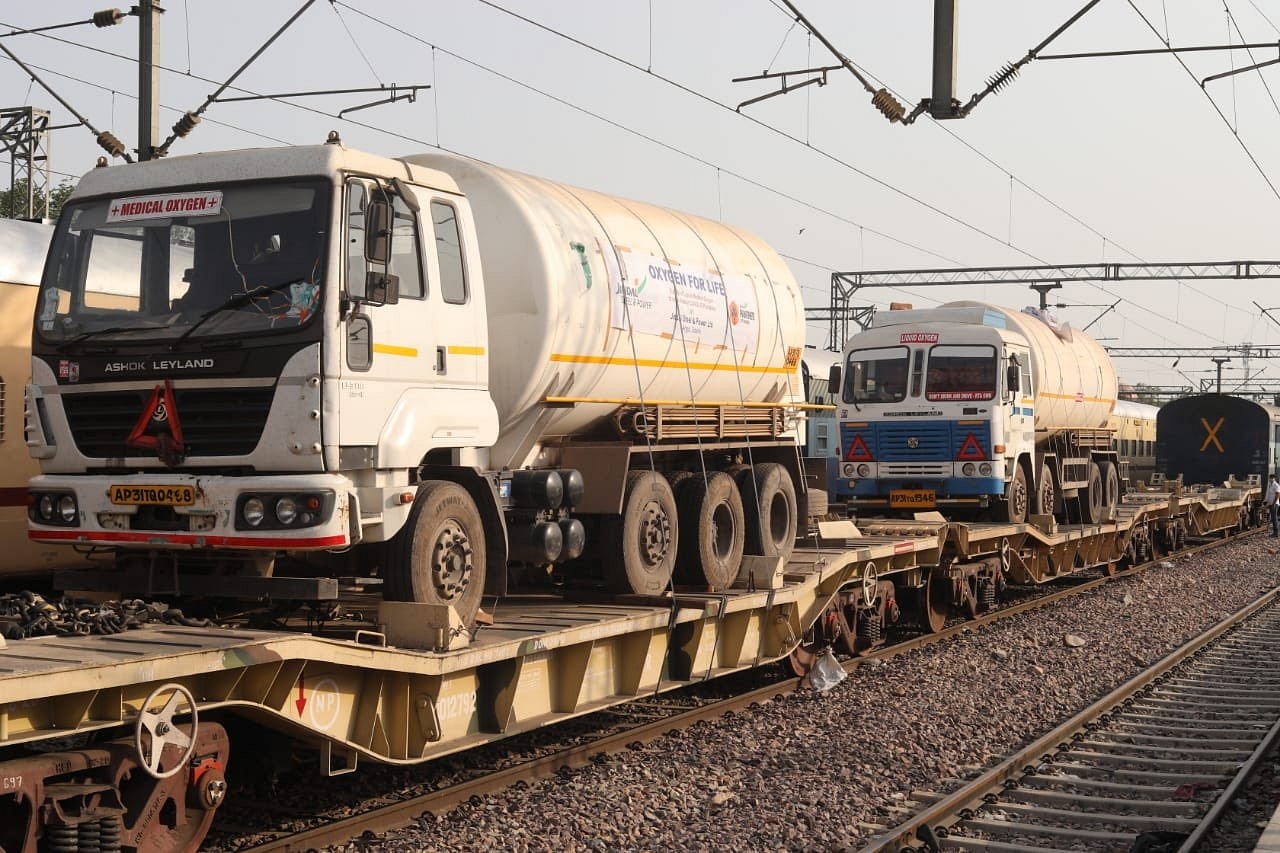Insta
Modi Govt To Ramp Up Liquid Medical Oxygen Production Capacity To 15,000 MT To Combat Another Covid-19 Wave

Tankers carrying liquid oxygen mounted on oxygen express.
Prime Minister Narendra Modi-led central government is actively working towards ramping up its capacity for around 15,000 metric tons (MT) of liquid medical oxygen (LMO) to prepare for future emergencies or another prospective wave of the Covid-19 pandemic.
Accordingly, all the state governments are being roped in to draw up an appropriate action plan so that the country is well-placed to deal with any 'worst-case' scenario in the coming times.
Hence, a viable roadmap is under development to build up infrastructure for oxygen across many different regions in India.
The demand for LMO had scaled up to a massive 8,000+ MT in the middle of May compared to around 3,100 MT LMO amid the peak of Covid-19's first wave. India was producing 9,690 MT of LMO on 13th May, and this figure will be gradually taken up to 15,000 MT in the coming six-eighth months through a conscious effort from the state governments.
Out of this, 2,500 MT of LMO will be made available via the 1,700 pressure-swing absorption plants set to be added by August 2021.
Brand new oxygen plants operating on a large scale will be the source of around 1500 MT of LMO. In contrast, state governments will be independently responsible for adding another 500-1,000 MT to the overall capacity during this time frame.
Moreover, the country has been segregated into ten regions based on oxygen availability and capacity along the supply chain to set up a robust infrastructure according to this plan, as reported by The Economic Times.
Around ten states have been recognized as areas where vital progress of oxygen production and supply systems is necessary to ensure adequate self-sufficiency in any future calamity.
Support Swarajya's 50 Ground Reports Project & Sponsor A Story
Every general election Swarajya does a 50 ground reports project.
Aimed only at serious readers and those who appreciate the nuances of political undercurrents, the project provides a sense of India's electoral landscape. As you know, these reports are produced after considerable investment of travel, time and effort on the ground.
This time too we've kicked off the project in style and have covered over 30 constituencies already. If you're someone who appreciates such work and have enjoyed our coverage please consider sponsoring a ground report for just Rs 2999 to Rs 19,999 - it goes a long way in helping us produce more quality reportage.
You can also back this project by becoming a subscriber for as little as Rs 999 - so do click on this links and choose a plan that suits you and back us.
Click below to contribute.
Latest